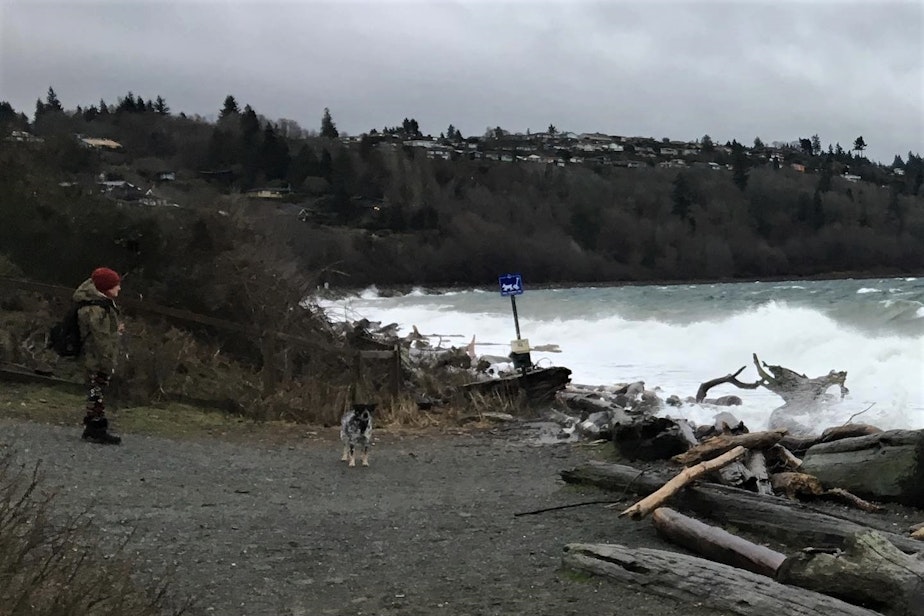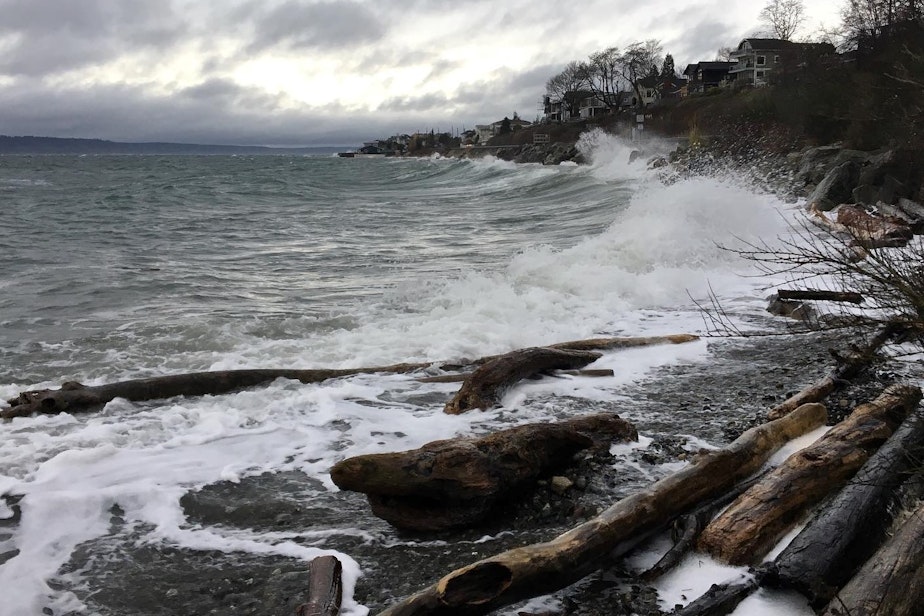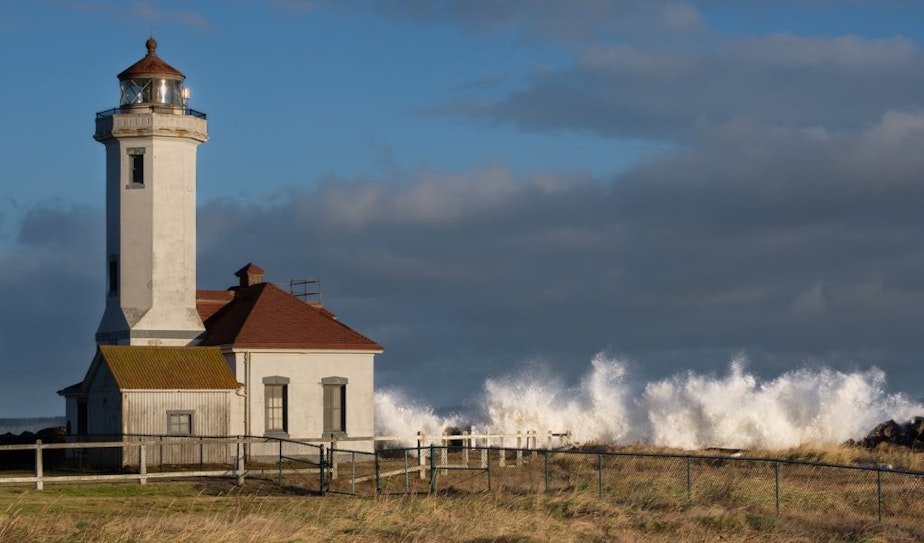Sea level on steroids: Record tides flood Washington coastlines
Some of the highest tides ever recorded hit Seattle and much of the Washington coast during the first week of January 2022.
High tides in Port Townsend, Seattle, and Tacoma on Friday were nearly two feet higher than forecast.
Friday morning’s tide in Seattle appears to be the highest in more than a century of record keeping, though the tidal gauge at Colman Dock blinked out for half an hour as Elliott Bay swelled past 14.47 feet, its highest elevation in at least 40 years, at 9 a.m.
Tidal gauges in Tacoma, La Push, and Westport also hit all-time highs, though those gauges’ data only go back a quarter century or less.
Surging seas led the National Weather Service to issue coastal flood warnings for the Puget Sound region on three days in January and five in December.
On Friday, reports of salt water flooding roads, homes, and businesses came in from British Columbia to south Puget Sound and Hood Canal.
Unusually high waves for Washington’s sheltered inland sea pounded waterfront homes on the Shoreline shoreline and in Birch Bay near the Canadian border, among other locations.
At Richmond Beach Saltwater Park just north of Seattle, driftwood logs tumbled in surf where beachgoers normally stroll along a placid Puget Sound.

Waves pounded the BNSF Railway line that hugs the eastern shore of Puget Sound for much of the key freight corridor’s run between Canada and Olympia.

Extreme high tides, along with extreme low tides, were expected this week, though not this high.
The swollen waters known as "king tides" come to Washington every winter, driven by the relative positions of the earth, moon, and sun.
This week, those extraterrestrial forces combined with low atmospheric pressure and strong winds to push Puget Sound much higher than forecast.
Sponsored
The powerful influence of air pressure on the sea is sometimes called the “inverse barometer effect.”
Atmospheric or barometric pressure is the weight of all the air above you.
When the barometer drops, the ocean can expand beyond what tide tables forecast, much like your pillow rising when you lift your head off it.
Mariners a century ago had a saying: “fog nips the tide,” a slight misstating of the fact that high-pressure weather systems that often bring coastal fog also push down the tides.
Washington Sea Grant oceanographer Ian Miller says low-pressure storms can boost tides in Puget Sound as much as 3 feet.
Sponsored
King tides are also given about an 8-inch boost these days by global warming.
Over the past century, sea level has risen about 8 inches in Seattle, as it has globally.
Oceanographers say king tides offer a glimpse of the future as warming waters and melting polar icecaps continue to push oceans higher.
“We know that the sort of event that happened today at high tide at many locations in Puget Sound will become more likely through time,” Miller said.
“It is possible that by 2060 to 2070 we could experience tides of the magnitude of king tide events every month due to sea level rise induced by climate change,” according to the King Tides Project, an international nonprofit.
Sponsored
As disruptive as king tides can be, they also serve to highlight what areas most need to gird themselves or otherwise adapt to rising seas.
In an email, BNSF Railway spokesperson Lena Kent said BNSF has made "significant investments" in sea walls and rock piles in recent years to protect its key freight corridor along Puget Sound.
“There’s no known issues or concerns yet,” said Laura Kingman, spokesperson for the Washington state Department of Transportation, which oversees Amtrak passenger service on BNSF’s seaside line. “BNSF usually does a really good job of maintaining their infrastructure.”
A University of Washington study in 2013 called inundation of the seaside rail line a less-likely impact of climate change on the coastal rail line than worsening mudslides, depending how fast global sea levels rise.
King tides can temporarily threaten all sorts of coastal infrastructure. Rising sea levels are a more lasting threat.
The ongoing rise of the oceans is expected to accelerate, given the heat-trapping greenhouse gas pollution that has accumulated in the atmosphere.
In 2018, University of Washington scientists forecast that seas in Washington state would rise another 19 to 24 inches this century, with greater amounts possible but unlikely.
In December, Oregon State University scientists reported finding a series of growing cracks in Antarctica’s Thwaites Glacier, which could lead that Florida-sized shelf of ice to collapse and accelerate sea level rise worldwide in as little as five years.
While scientific uncertainty remains about how fast oceans will rise in coming decades, scientists agree that slowing their rise depends mostly on humanity stopping its greenhouse gas pollution as quickly as possible.





